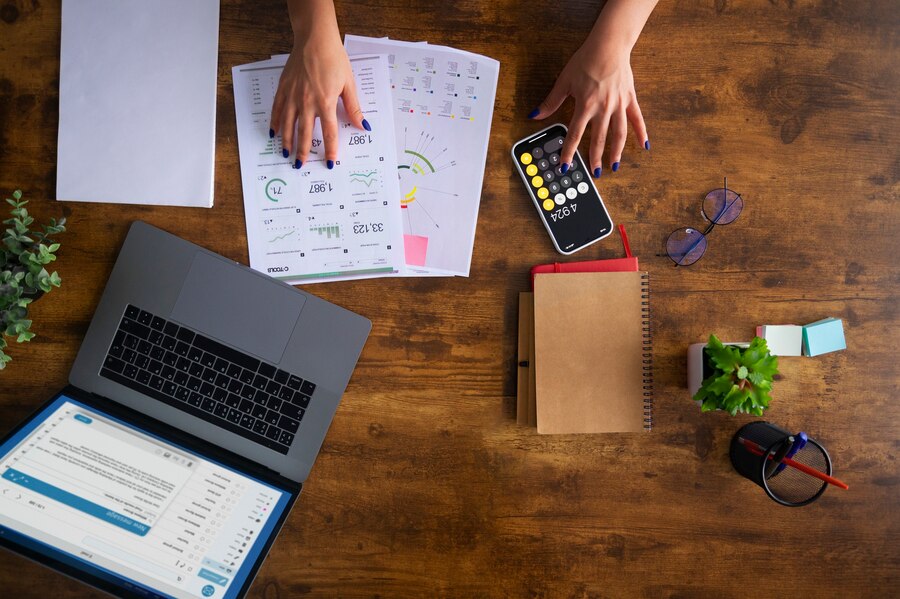In today’s fast-paced world, managing your finances can be a daunting task. However, with the right budgeting tools, you can gain control over your spending, save for future goals, and ultimately achieve financial stability. This article will explore various budgeting tools available, how to use them effectively, and tips for maintaining a successful budgeting strategy.
Understanding Budgeting Tools

Budgeting tools come in various forms, from simple pen-and-paper methods to sophisticated software applications. The primary goal of these tools is to help you track your income and expenses, enabling you to make informed financial decisions. Here are some popular types of budgeting tools:
- Spreadsheets: Programs like Microsoft Excel and Google Sheets allow for customizable budgeting templates. You can create a budget that suits your specific needs and track your financial progress over time.
- Mobile Apps: Applications such as Mint, YNAB (You Need A Budget), and EveryDollar offer user-friendly interfaces for tracking expenses, setting savings goals, and monitoring your financial health on the go.
- Envelope System: This traditional method involves allocating cash into envelopes designated for specific spending categories (e.g., groceries, entertainment). Once the cash in an envelope is gone, you cannot spend any more in that category for the month.
- Online Budgeting Tools: Websites like Personal Capital and GoodBudget provide online platforms to manage your finances without needing to download software. These tools often offer features like expense tracking and investment monitoring.
Steps to Use Budgeting Tools Effectively
- Choose the Right Tool
Select a budgeting tool that aligns with your preferences and lifestyle. If you enjoy technology, a mobile app may suit you best. If you prefer hands-on methods, consider using spreadsheets or the envelope system. - Set Clear Financial Goals
Before diving into budgeting, establish clear financial goals—whether it’s saving for a vacation, paying off debt, or building an emergency fund. Having specific targets will guide your budgeting process and keep you motivated. - Track Your Income and Expenses
Input all sources of income into your chosen tool and categorize your expenses accurately. Be thorough; include fixed costs (like rent or mortgage) as well as variable expenses (like groceries or entertainment). This comprehensive view will help identify spending patterns. - Create a Realistic Budget
Based on your income and expenses, create a budget that reflects your financial situation. Ensure it allows for essential expenses while also allocating funds for savings and discretionary spending. - Monitor Progress Regularly
Regularly review your budget to assess progress toward your financial goals. Most budgeting apps provide visual representations of your spending habits, making it easier to identify areas where you may need to cut back. - Adjust as Necessary
Life is unpredictable; therefore, be prepared to adjust your budget as circumstances change—whether due to unexpected expenses or changes in income. Flexibility is key to successful budgeting. - Stay Committed
Consistency is crucial in maintaining an effective budget. Make it a habit to update your budget regularly and stick to it as closely as possible.
Conclusion
Using budgeting tools effectively can significantly enhance your financial management skills and help you achieve your financial goals. By selecting the right tool for your needs, setting clear objectives, tracking income and expenses diligently, and adjusting as necessary, you can take control of your finances and pave the way toward financial stability.
Frequently Asked Questions (FAQs)
1. What are the best budgeting tools available?
- Some popular budgeting tools include Mint, YNAB (You Need A Budget), EveryDollar, Microsoft Excel spreadsheets, and GoodBudget.
2. How do I choose the right budgeting tool for me?
- Consider your personal preferences (digital vs. manual), ease of use, features offered (like expense tracking or goal-setting), and whether you prefer mobile access or desktop use.
3. Can I use multiple budgeting tools at once?
- Yes! Many people find success using a combination of tools; for example, using an app for daily tracking while maintaining a spreadsheet for long-term planning.
4. How often should I update my budget?
- It’s advisable to review and update your budget at least monthly or whenever there are significant changes in income or expenses.
5. What if I go over my budget in certain categories?
- If you overspend in one category, assess where you can cut back in other areas or adjust future budgets accordingly to accommodate those changes.
6. Is it necessary to track every single expense?
- While it’s beneficial to track most expenses for accuracy, some people find it easier to categorize regular bills or recurring payments rather than tracking every small purchase.
7. How can I stay motivated to stick to my budget?
- Set achievable goals, celebrate milestones along the way, and regularly remind yourself of the benefits of sticking to your budget—such as reduced stress and increased savings.
8. What should I do if I have trouble sticking to my budget?
- Reevaluate your budget for realism; consider simplifying categories or reducing discretionary spending limits if necessary.
